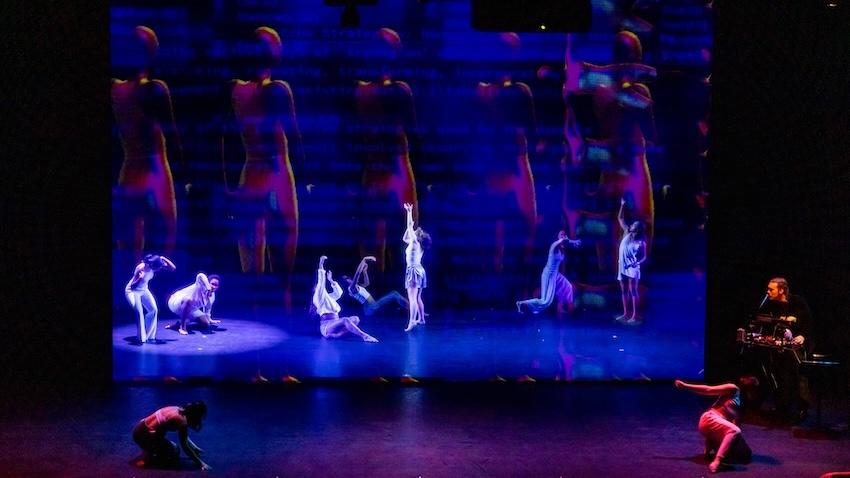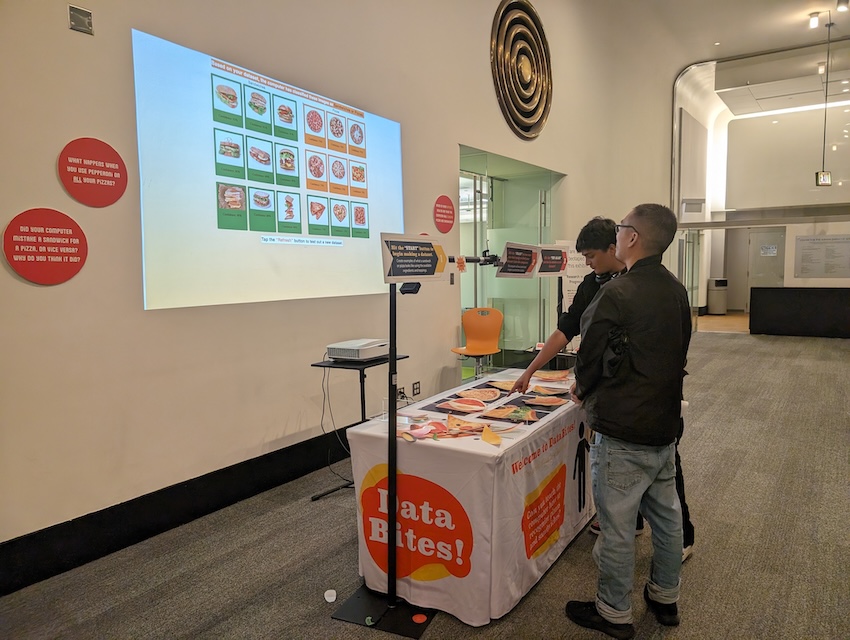
Middle Schoolers’ Feedback Informs New Approach to AI-based Museum Exhibits
Researchers at Georgia Tech are creating accessible museum exhibits that explain artificial intelligence (AI) to middle school students, including the LuminAI interactive AI-based dance partner developed by Regents' Professor Brian Magerko.
Ph.D. students Yasmine Belghith and Atefeh Mahdavi co-led a study in a museum setting that observed how middle schoolers interact with the popular AI chatbot ChatGPT.
“It’s important for museums, especially science museums, to start incorporating these kinds of exhibits about AI and about using AI so the general population can have that avenue to interact with it and transfer that knowledge to everyday tools,” Belghith said.
Belghith and Mahdavi conducted their study with nine focus groups of 24 students at Chicago’s Museum of Science and Industry. The team used the findings to inform their design of AI exhibits that the museum could display as early as 2025.
Belghith is a Ph.D. student in human-centered computing. Her advisor is Assistant Professor Jessica Roberts in the School of Interactive Computing. Magerko advises Mahdavi, a Ph.D. student in digital media in the School of Literature, Media, and Communication.
Belghith and Mahdavi presented a paper about their study in May at the Association for Computing Machinery (ACM) 2024 Conference on Human Factors in Computing Systems (CHI) in Honolulu, Hawaii.
Their work is part of a National Science Foundation (NSF) grant dedicated to fostering AI literacy among middle schoolers in informal environments.

Expanding Accessibility
While there are existing efforts to reach students in the classroom, the researchers believe AI education is most accessible in informal learning environments like museums.
“There’s a need today for everybody to have some sort of AI literacy,” Belghith said. “Many middle schoolers will not be taking computer science courses or pursuing computer science careers, so there needs to be interventions to teach them what they should know about AI.”
The researchers found that most of the middle schoolers interacted with ChatGPT to either test its knowledge by prompting it to answer questions or socialize with it by having human-like conversations.
Others fit the mold of “content explorers.” They did not engage with the AI aspect of ChatGPT and focused more on the content it produced.
Mahdavi said regardless of their approach, students would get “tunnel vision” in their interactions instead of exploring more of the AI’s capabilities.
“If they go in a certain direction, they will continue to explore that,” Mahdavi said. “One thing we can learn from this is to nudge kids and show them there are other things you can do with AI tools or get them to think about it another way.”
The researchers also paid attention to what was missing in the students’ responses, which Mahdavi said was just as important as what they did talk about.
“None of them mentioned anything about ethics or what could be problematic about AI,” she said. “That told us there’s something they aren’t thinking about but should be. We take that into account as we think about future exhibits.”
Making an Impact
The researchers visited the Museum of Science and Industry June 1-2 to conduct the first trial run of three AI-based exhibits they’ve created. One of them is LuminAI, which was developed in Magerko’s Expressive Machinery Lab.
LuminAI is an interactive art installation that allows people to engage in collaborative movement with an AI dance partner. Georgia Tech and Kennesaw State recently held the first performance of AI avatars dancing with human partners in front of a live audience.

Duri Long, a former Georgia Tech Ph.D. student who is now an assistant professor at Northwestern University, designed the second exhibit. KnowledgeNet is an interactive tabletop exhibit in which visitors build semantic networks by adding different characteristics to characters that interact together.
The third exhibit, Data Bites, prompts users to build datasets of pizzas and sandwiches. Their selections train a machine-learning classifier in real time.
Belghith said the exhibits fostered conversations about AI between parents and children.
“The exhibit prototypes successfully engaged children in creative activities,” she said. “Many parents had to pull their kids away to continue their museum tour because the kids wanted more time to try different creations or dance moves.”
As computing revolutionizes research in science and engineering disciplines and drives industry innovation, Georgia Tech leads the way, ranking as a top-tier destination for undergraduate computer science (CS) education. Read more about the college's commitment:… https://t.co/9e5udNwuuD pic.twitter.com/MZ6KU9gpF3
— Georgia Tech Computing (@gtcomputing) September 24, 2024


